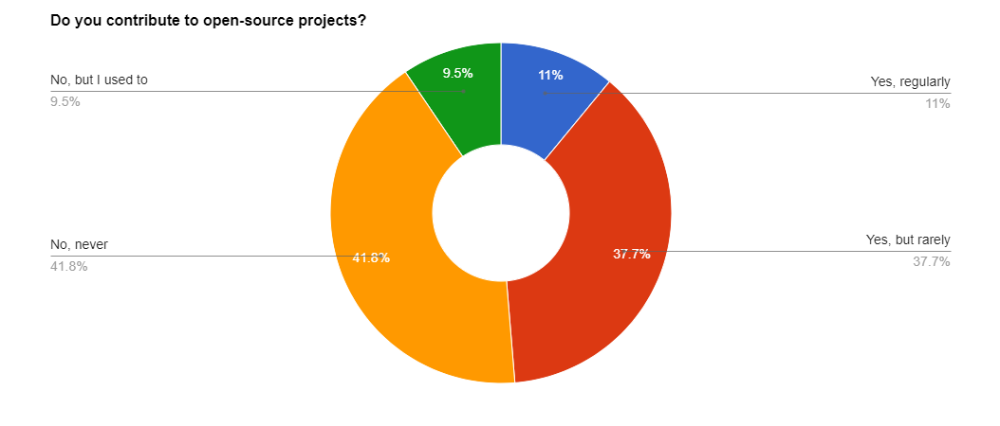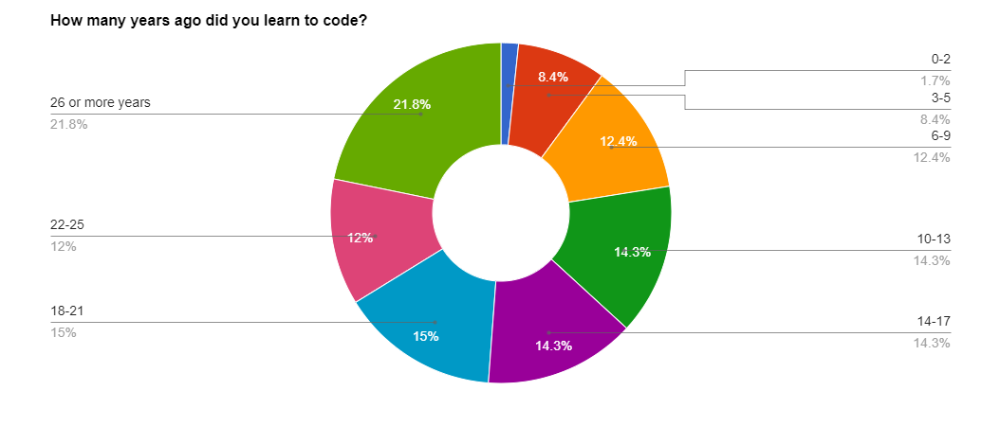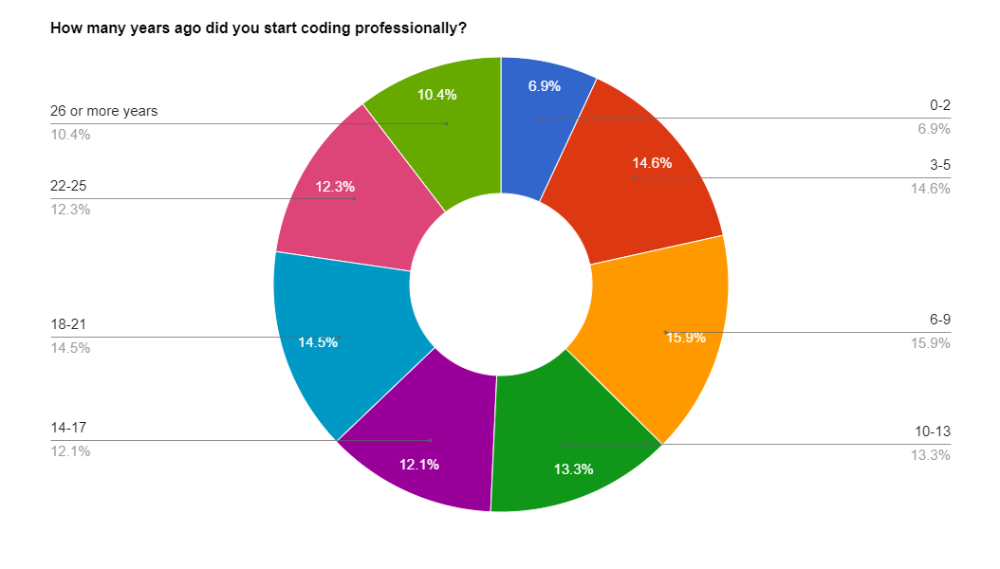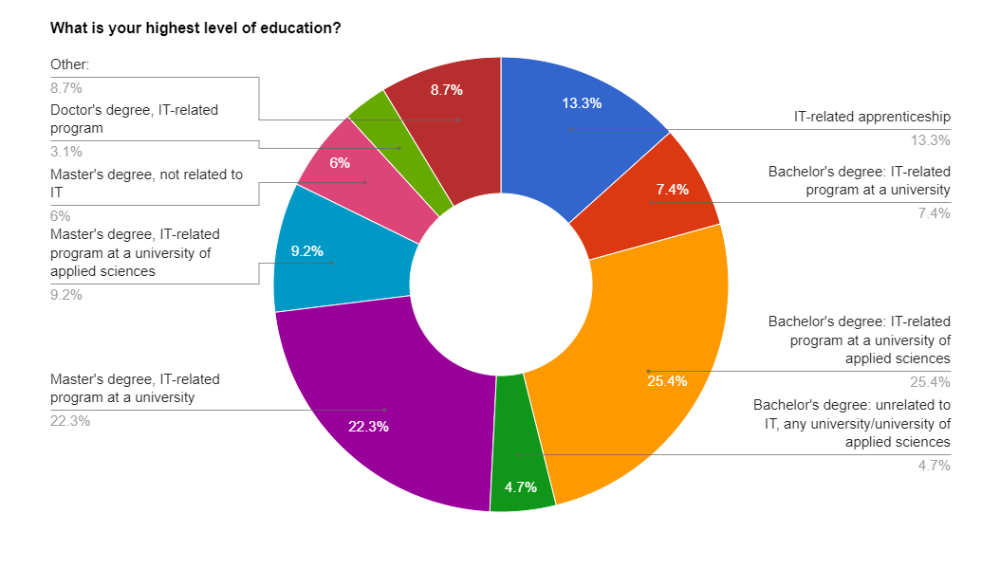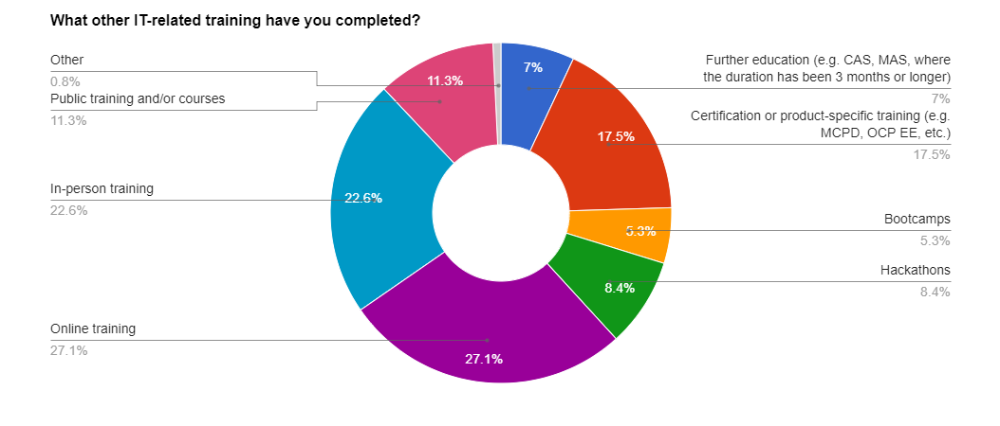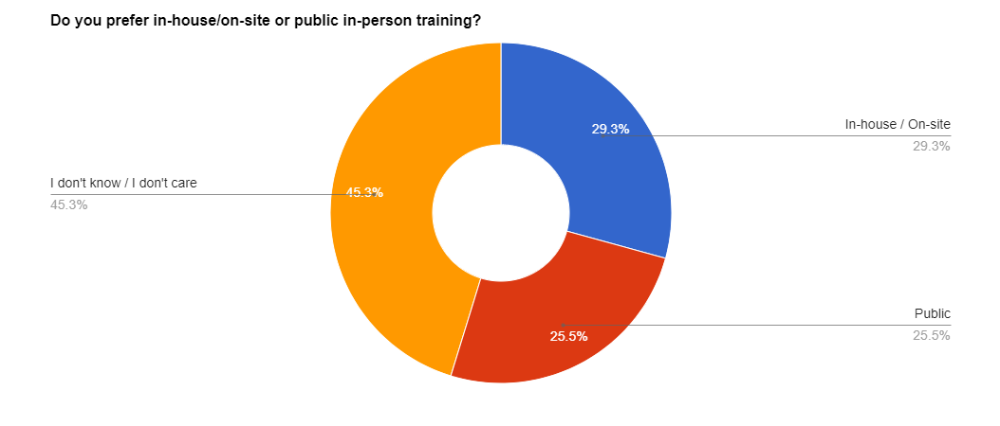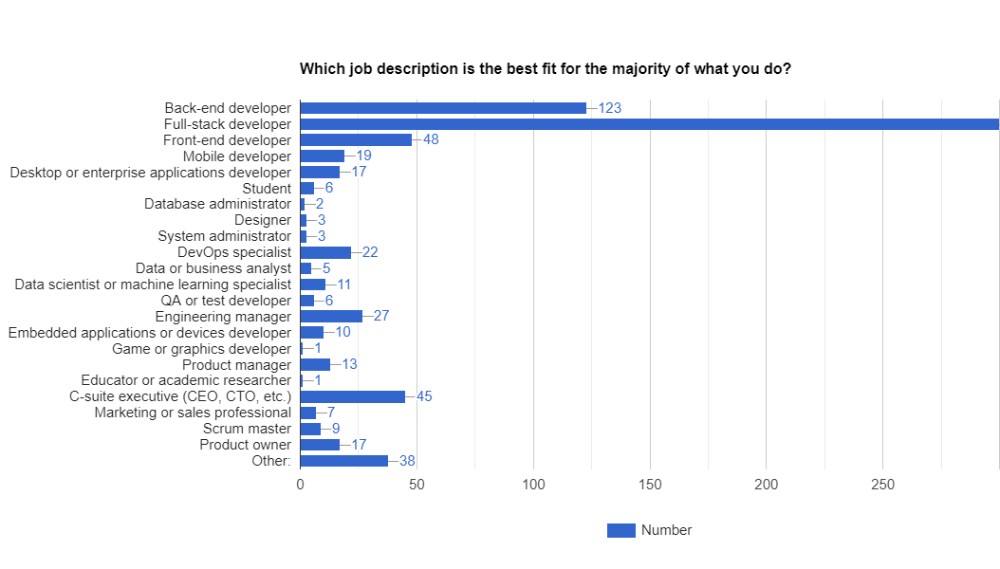
Almost 41 percent (2020: 40 percent) of participants identify as fullstack developers. 17 percent (2020: 17 percent) work on the backend, while frontend developers account for around 6 percent. The proportion of mobile developers fell to just over 2.6 percent (2020: 4 percent). Desktop or enterprise application developers also dropped to about 2.3 percent (2020: 6 percent). Despite a large selection, the next largest group could not locate themselves - they are "other."
Also interesting: 45 people, or about 6 percent (2020: 4 percent), are C-level - so appear to be coding or formerly coding management personnel.
